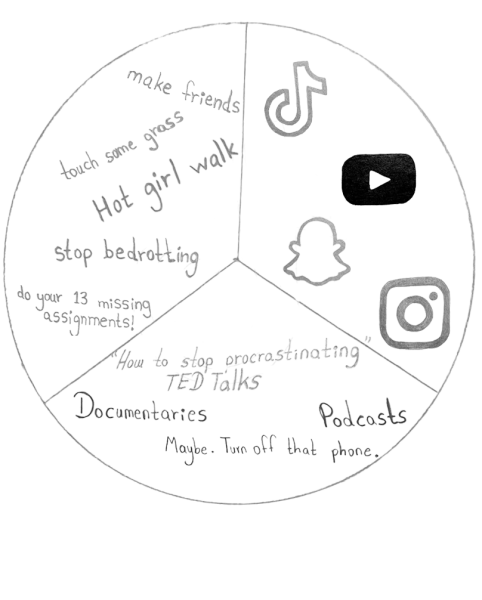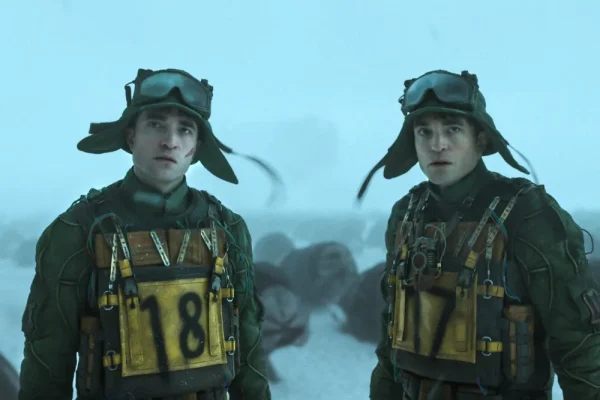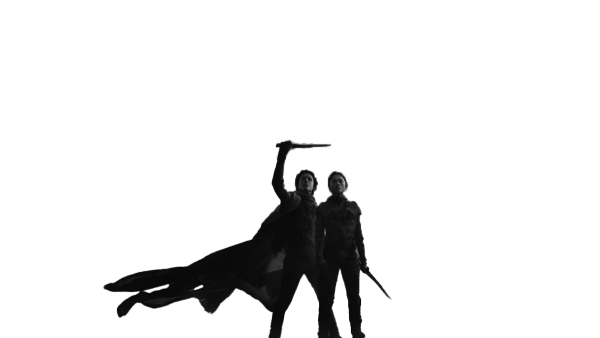All About US
A review of Jordan Peele’s new horror movie.
When the trailer for Jordan Peele’s Us was released last December, the song “I got 5 on it” was tainted forever.
The ominous remix of this classic song in the trailer is a perfect example of what the movie does best: seamlessly blends pop culture with hair-raising suspense and a warped sense of reality.
Us is the second film by director Jordan Peele, following Get Out, the academy-award winning thriller that quickly became a cultural phenomenon after its release in 2017.
Peele’s latest film has already broken records at the box-office: it became the most successful opening ever for an original horror movie after earning $70.3 million on opening weekend.
Us stars Lupita Nyong’o as Adelaide Wilson, a young mother who travels to Santa Cruz for vacation with her husband Gabe (Winston Duke), and their children, Zora and Jason (Shahadi Wright Joseph and Evan Alex).
While there, the Wilsons are attacked and stalked by their murderous doppelgangers, the nightmarish and animalistic embodiment of themselves.
Throughout the movie, Peele creates chilling suspense through stylistic visual symbols, ominously mixed music, and stark, haunting imagery.
Peele intersperses squeamish scenes with humor and authentic familial interactions, making the Wilsons warm and relatable. The siblings bicker, the parents lovingly tease each other, and Duke’s performance is riddled with hilarious dad jokes.
The result is an honest and endearing picture of a family just like many of ours, making the horrors they face that much more palpable.
The brilliance of Us lies in Peele’s ability to subvert common horror movie tropes while still staying true to the genre.
Instead of making the film’s villains into savage monsters, Peele duplicates the protagonists themselves, challenging the classic horror archetype.
These villains are revealed early on in the movie in a head-on confrontation with the protagonists, yet they become no less shocking to viewers as the plot continues.
The entire ending sequence is shot in broad daylight, and yet it still features blood-curdling jump scares and shivering suspense.
Ultimately, Peele proves that the things which are most apparent, predictable, and similar to us may in fact be the most terrifying.
The movie ends with a plot twist, delivered to the audience through a series of flashbacks, and the curtain closes on a nauseating cliffhanger.
The audience is left dumbfounded, forced to grapple with the idea that they may have been rooting for the villain the whole time.
Peele challenges our preconceived ideas about evil, blurring the lines between villain and victim.
“The best monster movies … allow their villains to have these different layers. You are meant to be terrified … but also to relate to them on some level,” Peele said in an interview with the LA Times.
Similar to Get Out, Us has a broader social message that spotlights tensions and divisions in American society.
Peele was inspired by the xenophobia sparked in the wake of the 2016 election and used Us to create social commentary about what happens when we as a society suppress our demons and fail to hold ourselves accountable for our wrongs.
The result in the movie is a confrontation between a group of people that comfortably enjoys their privilege and an oppressed group that seeks a rapid and violent liberation.
“If you suppress guilt, hatred, negativity, you’ll punch a wall someday,” Peele said. “As a collective, as a society, when we suppress something together, our part in something — we get extraordinary atrocities.”
Peele gives oxygen to these extraordinary atrocities in Us, artfully scaring us into empathy and self-reflection.









